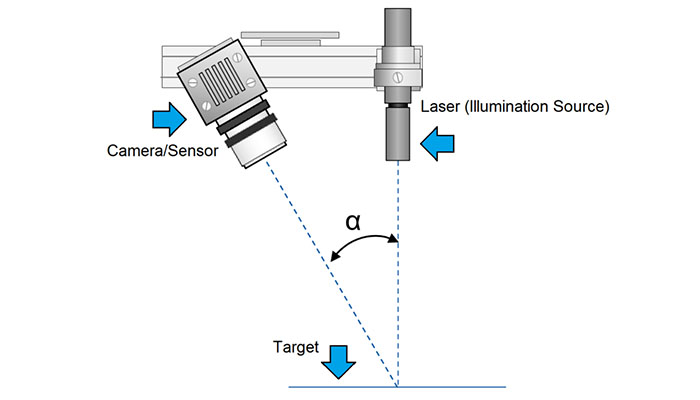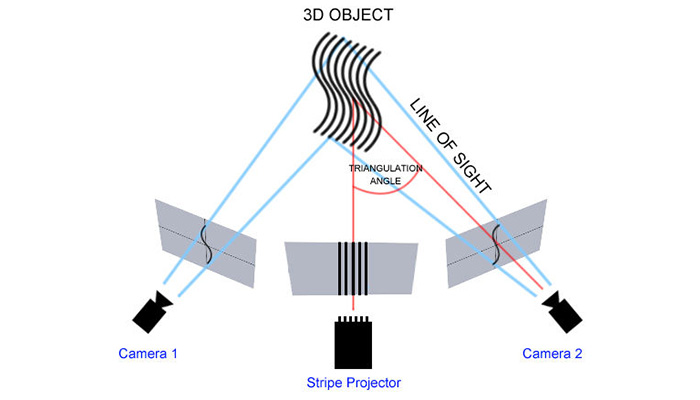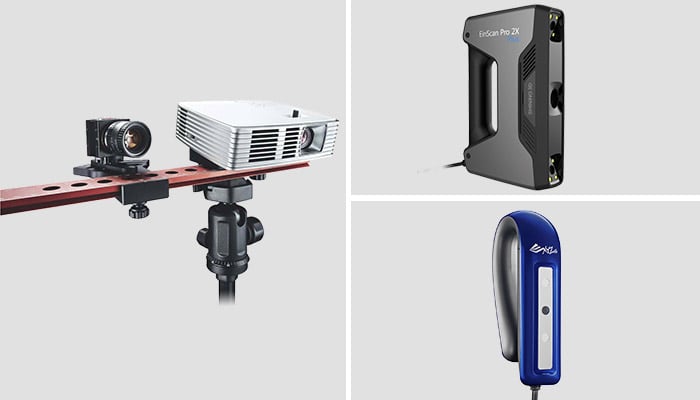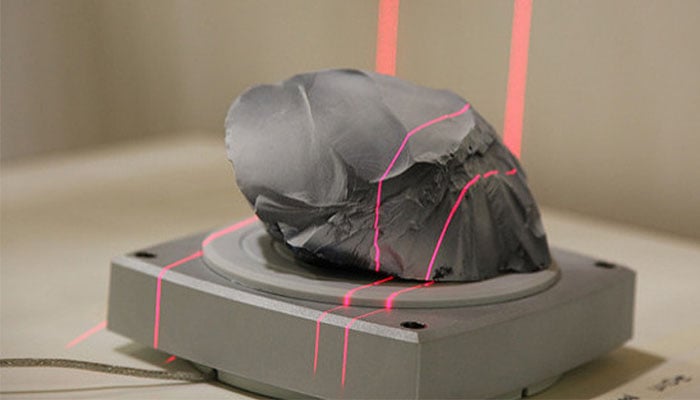
3D Laser Scanner or Structured Light Scanner: Which One to Choose?
In 3D printing, 3D scanners are very often an essential step to facilitate the modeling of an object . They enable the collection of data on the shape and sometimes, depending on the 3D scanner, on the appearance (for example, colors). Therefore, 3D scanning improves the design process, speeds up and reduces errors in data collection, and saves time and money. 3D scanning can be based on different technologies, each with its own advantages and limitations. In this article, we explore the two main technologies used for 3D scanning for 3D printing, namely laser triangulation and structured light. What is the difference between a 3D laser scanner and a structured light scanner? Which one should you choose for your projects?
3D Laser Scanner: Technology, Advantages and Limitations
Laser scanners rely on trigonometric triangulation to accurately capture a 3D shape in the form of millions of points. More precisely, they work by projecting a laser point or line onto an object and then capturing its reflection with sensors. Since the sensors are positioned at a known distance from the laser source, precise measurements of the points can be made by calculating the angle at which the laser light reflects. Knowing the distance between the scanner and the object, the scanning hardware can map the object's surface and record a 3D scan.
This method is called triangulation because the laser point (or line), the sensor and the laser emitter form a triangle as shown in the image below. There are many types of laser scanners on the market to choose from: portable, desktop or professional/industrial. The key is that they work in a short range. 
The advantages of laser triangulation technology are its resolution and accuracy. When we talk about accuracy, we mean in the order of tens of micrometers. You can also buy a 3D laser scanner at a very reasonable price, since its design can be quite simple.
However, it should be noted that the properties of the surface to be scanned influence the scanning process itself. Therefore, very shiny or transparent surfaces can be quite problematic for this technology.

The Matter & Form V2 (left) is a desktop 3D laser scanner, selling for $749. Creaform’s Go!SCAN SPARK (right) is a professional-grade portable 3D laser scanner with a starting price of around $30,000.
Structured Light Scanners: Technology, Advantages and Limitations
Today, many portable 3D scanners for 3D printing use structured light technology. This technology also uses trigonometric triangulation, but it works by projecting a light pattern onto the object being scanned, rather than a laser line (or dot). The pattern is projected onto the object using an LCD projector or other stable light source. One or more sensors (or cameras), slightly offset from the projector, observe the shape of the light pattern and calculate the distance to each point in the field of view. The structured light used in the scanning process can be white or blue, and the light pattern is usually composed of a series of stripes, but can also be composed of a matrix of dots or other shapes. This type of device, just like the laser scanner, works in short range and can be used handheld or mounted on a tripod.

The advantage of structured light technology is the speed of the scans. A scan can be acquired in about 2 seconds and the scanning area is also quite large. Just like laser scanners, structured light scanners are extremely precise and offer high resolution.
One of the disadvantages of this type of scanner is that it is sensitive to the lighting conditions of a given environment. This factor has less of an impact in laser scanners. For example, working outdoors would be extremely difficult.

HP’s Structured Light Pro S3 (left) is a tripod-mounted device that retails for about $4,390 (€3,930). Shining3D’s EinScan Pro 2X (top) is a professional handheld structured light device that retails for about $6,899, and XYZprinting’s Scanner 2.0 (bottom) is a beginner’s handheld device that retails for $256 (€226).
Other technologies
In the case of the two technologies described above, they are intended for short-range 3D scanning. If you need to scan an object at a long distance, you will have to opt for other solutions. We will mention two other technologies indicated for medium and long-range 3D scanning.

3D scanning with structured light technology
The time-of-flight 3D scanner (ToF, Time of Flight) use pulsed laser technology. Just like laser scanners, they use lasers to accurately scan a 3D object, but the technology works in a completely different way. Knowing exactly how fast the laser light is, the system measures the time it takes for the laser to reach an object and be reflected back to its sensor.
Another type of time-of-flight 3D scanner uses phase-based systems. This works like pulsed laser technology, but it also modulates the power of the laser beam. The scanner compares the phase sent by the laser and the phase that comes back to the sensor. This makes it more accurate than a pulsed laser 3D scanner, but it isn't as flexible for long-distance scanning. Time-of-flight 3D scanners are certainly not as accurate as laser or structured-light scanners, but if you want to scan a large object, such as a building, this is the technology you'll most likely use.

3D scan performed using laser triangulation technology


 https://www.instagram.com/3digital.tech/
https://www.instagram.com/3digital.tech/